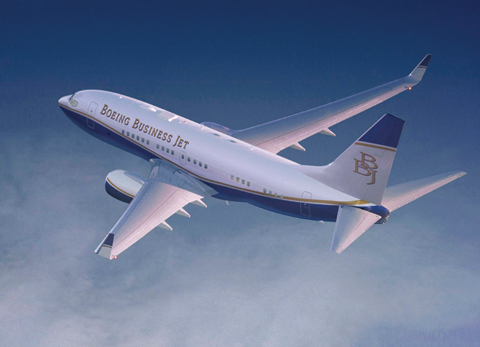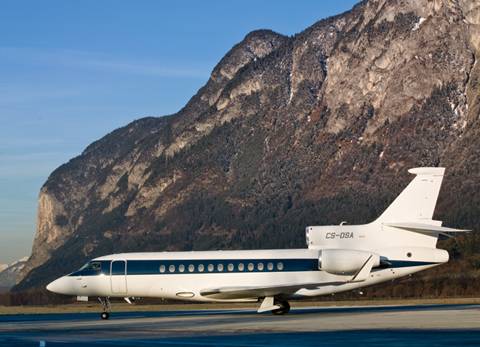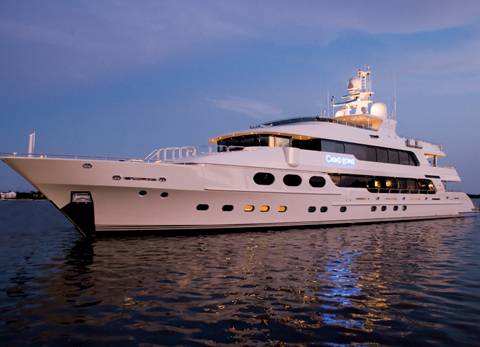Private air travel has gotten its fair share of press attention in recent months. It began when auto industry executives flew comfortably to Washington to discuss a bailout, and it continued, unabated and negative, until President Obama told Citigroup unequivocally that the company would not be taking delivery of the new corporate jet after having received federal bailout funds.
These crafts, outfitted with conference rooms and state-of-the-art technologies, allow businessmen to continue to conduct their trade in a secure environment, providing the freedom to travel to and from remote locations with ease, skipping the inconveniences of security lines, runway congestion, and maddening delays.
These CEOs’ gross mismanagement of funds (and seemingly intellect—it doesn’t take a rocket scientist to know you shouldn’t buy a plane with taxpayers’ money) has cast a shadow over the entire industry. This is not a time when any industry can afford a negative connotation, especially one that is utterly one-sided and misinformed. According to the National Air Transportation Association, since mid-November, personal aviation in America has fallen by more than a third, resulting in corporations being forced to sell their aircraft. But resale prices are crashing as well. The report states that billions of dollars of aircraft values have disappeared, and employment has been slashed at virtually every aviation business in the country.
But private air travel is a business tool that is indispensible for a wide array of industries. James Coyne, president of the NATA, recently penned an impassioned open letter to President Obama beseeching him to stop bashing corporate travel. “Personal aviation is a critical tool for many businesses, even when times are tough and profits are scarce,” he writes, “especially if their competitors are hunkered down and clueless about new opportunities.” He continues:
“Thousands of business leaders across America are as justified to use private aviation as [the president], even if their companies have only a fraction as much red ink on their balance sheets as the federal government has on its. And it’s not just business leaders: presidents, CEOs, and leaders of universities, foundations, associations, unions, hospitals, law firms, and individuals as diverse as Tiger Woods, John Travolta, and Yo-Yo Ma all depends on private aviation as much as you do.”
The letter is not an attack on President Obama’s use of Air Force One, but rather a plea that he stop demonizing those who have the means and the will to take to the skies without the hassles of commercial aviation. For many who are soaring at 30,000 feet, business jets really are for business, not just vessels to take flyers to Milan for couture shopping sprees. These crafts, outfitted with conference rooms and state-of-the-art technologies, allow businessmen to continue to conduct their trade in a secure environment, providing the freedom to travel to and from remote locations with ease, skipping the inconveniences of security lines, runway congestion, and maddening delays. Furthermore, private air travel allows businessmen and women to reach remote airfields not served by commercial travel. With vast expanses of America home to countless industry warehouses and factories that can be hours away from the closest commercial hub, private aircraft allow buyers, manufacturers, clients, and investors to reach these company headquarters with relative ease.
The BBJ was designed specifically for corporate and VIP applications as a special, high-performance derivative of the Boeing 737-700.
These conveniences certainly come with a hefty price tag. Business jets are known to run owners upwards of $40 million (depending on features) from the get-go, and operation and fuel certainly do not come cheap. While we would be hard-pressed to say that these expenses may translate into a cost-saving measure, when you take into account the conveniences (time is money!), the planes afford busy CEOs a way to continue to do their jobs while on the go.
Take, for example, the ultimate craft for private travel: the Boeing Business Jet, which is pictured on these pages. Boeing recognized that in today’s international market, it is imperative to provide entrepreneurs with both comfortable and productive flying time. Boeing and General Electric formed a joint venture—Boeing Business Jets—in 1996 to produce a BBJ with nearly three times the cabin space of a traditional long-range business jet at a comparable price. GE promptly became BBJ’s first customer, ordering two jets for corporate use.
The BBJ was designed specifically for corporate and VIP applications as a special, high-performance derivative of the Boeing 737-700. The addition of auxiliary fuel tanks provides owners with a range of 6,200 nautical miles versus the 737’s 3,200 nautical miles. This gives the BBJ the ability to fly nonstop from Paris to Los Angeles, New York to Tokyo, London to Buenos Aires, putting the world at the flyer’s fingertips.
The grand and comfortable interior boasts 807 square feet of space, all of which can be customized by the purchaser at any of the company’s completion centers worldwide. The versatility allows owners to create a unique environment tailored to their specific needs and seating requirements, whether it’s for eight or 100 passengers. One layout, fit for 12 passengers, incorporates a full-service galley and crew rest area, a main lounge and private meeting area, and master suite with full-size shower, allowing travelers to reach their destinations rested and ready to take on whatever challenge may lay ahead.
One hundred and four BBJ and VIP airplanes are currently in service around the world, in addition to approximately 30 wide-body Boeing jets that are in service to governments and heads of state. The new BBJ 3, which offers 35 percent more interior space than the BBJ and 89 percent more luggage space, is expected to hit the skies later this year.
These crafts allow the owners to conduct business on a global basis. Coyne points out in his letter that many times when CEOs board their private jets they are increasing sales, making investments, evaluating major projects, delivering speeches, building morale, motivating their troops, making new loans, expanding plants, exploring new markets, finding new resources, beating competitors, attracting investors, and saving their companies. These business jets provide the resources to make business happen in America and around the world.





















